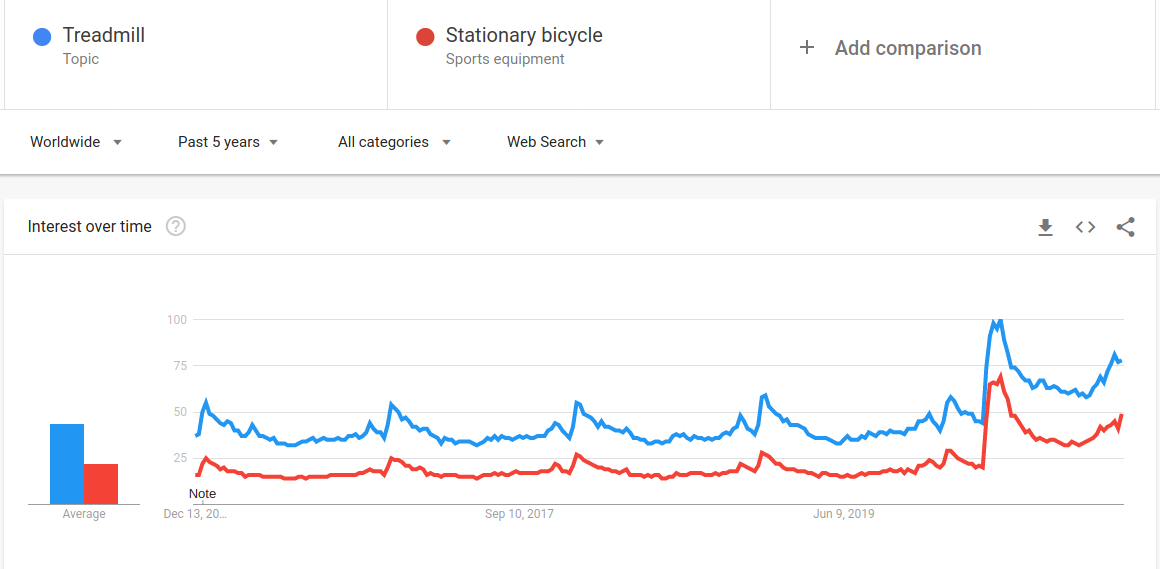Covid-19 and Purchasing Behavior: Evidence from International Trade Figures
The epidemic has transformed our daily lives, leading to an increase in demand for certain categories of products
Published by Marzia Moccia. .
Great Lockdown Consumption pattern Global demand Covid-19 Conjuncture Internationalisation toolsThe outbreak of the Covid-19 pandemic on a global scale and the necessary containment measures led to several changes in lifestyles, consumer preferences and end-consumer priorities. The epidemic has modified our daily lives, leading to an increase in demand for those products that could meet new social needs. In this context, data on world trade flows can represent a useful source of information to observe the changes that are taking place on a global scale.
In the current phase of economic downturn, global demand for certain categories of goods has shown a strong countertrend, as you can see in the following graph.

Source: ExportPlanning
Net of the increase recorded by global demand of Covid-19 related goods, as discussed in the previous article "Covid-19 Goods and Devices", international flows of products typically intended for household consumption have shown a significant acceleration during the past months. This result is an indirect measure of changes in purchasing behavior imposed by the containment measures. In particular, the analysis has led to the identification of 4 main clusters of goods:
- Sports equipment and leisure products
- Home hygiene and personal care products
- Consumer electronics
- Goods for the home
First, the acceleration that has characterized the global demand for consumer electronics over the last few months has interrupted the weakly downward trend visible since the end of 2018, and mainly due to tariff actions in the US-China trade war.
The most recent results are mainly due to the strong increase in demand for electronic devices and equipment to support work, home office and home entertainment, driven by the increases recorded by the worldwide flow of PCs, tablets, monitors and smartphones.
Moreover, as highlighted by the Google Trends index, the interest of users worldwide for the topics "laptop", "monitor" and "tablet" has remained steadily close to that recorded in the most stringent months of lockdown.

Source: Google Trends
The dynamics of the demand for some categories of goods for the home is also bucking the trend. These are typically small household appliances, mainly intended for the kitchen (electric ovens, fryers, mixers), together with a variety of small items of furniture and home comfort.
Of particular note is also the increase in sports equipment and leisure products, against a particularly negative performance of finished personal products industry (down 20% in the first 9 months of 2020). The growth of the sector was driven above all by the increase in demand for indoor gymnastics and wellness equipment, together with goods typically intended for leisure (toys, musical instruments). This interest is particularly linked to the more stringent lockdown months, as shown in the graph below.

Source: Google Trends
Finally, the trade of products related to home hygiene and personal care has not interrupted the growth trend of recent years, with positive performances both in the segments for home cleaning and in those more closely related to personal care and well-being.
Conclusions
From the brief review proposed, it is clear that the measures to contain the epidemic have substantially reduced, in the short term, consumption of luxury and unnecessary goods, more linked to social contexts, in favor of goods and products typically used and consumed at home. The enhancement of domestic comfort, in fact, passes through the adaptation of space and the advancement of the available technological equipment.
These new lifestyles and consumption patterns could lead to a recomposition of the basket of consumption towards a new long-term balance.
As anticipated in the previous article "A Measure of the Changes in Demand by Type of Goods", it will be precisely the ability to measure and anticipate these changes in demand to constitute a strategic asset to cope with the current competitive environment.


